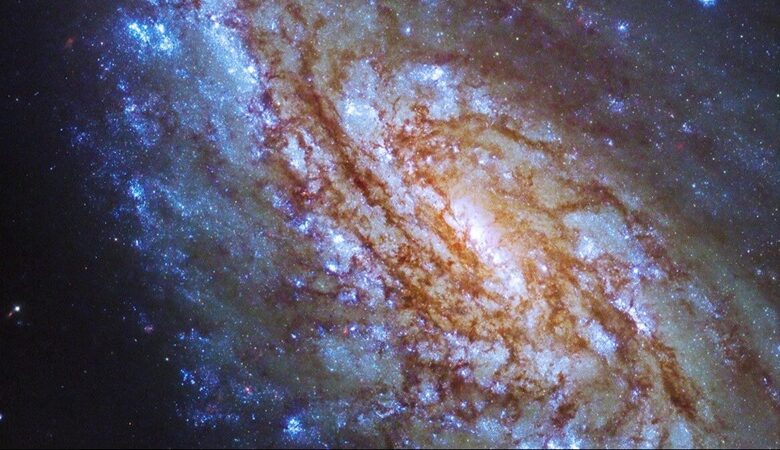Nascent galaxy discovered in formation at the end of the longest tidal tail of NGC 3785 galaxy
News Mania Desk / Piyal Chatterjee/ 6th January 2025

Approximately 430 million light years away from Earth, in the Leo constellation, a newly forming ultra-diffuse galaxy has been found at the tip of the tidal tail, an extended, narrow stream of stars and interstellar gas, of galaxy NGC 3785. The identification of galaxy formation, likely influenced by the gravitational relationship between NGC 3785 and a nearby galaxy, represents a significant milestone in comprehending galaxy evolution.
The NGC 3785 galaxy is recognized for having the longest tidal tail found to date. The tail stretches from the galaxy and is created by gravitational forces (“tidal forces”) when two galaxies closely interact, effectively extracting material from each other during a near encounter or merger event.
When astronomers from the Indian Institute of Astrophysics (IIA), which is an autonomous body under the Department of Science and Technology, examined the galaxy NGC 3785 in detail, they discovered that it possesses the longest tidal tail known to date and that an ultra-diffuse galaxy is in the process of forming at the tip of this tidal tail too.
Omkar Bait, while studying at the National Centre for Radio Astrophysics (NCRA) in Pune a few years ago, stumbled upon a tidal tail that appeared longer than usual, made up of a stream of stars and gas. Acknowledging that this was an extraordinary item, this finding was communicated to Yogesh Wadadekar (NCRA) and Sudhanshu Barway at IIA. They collaborated on the following research. “We chose to examine this remarkable galaxy and its immense tidal tail closely,” stated Chandan Watts, a Ph.D. candidate at IIA and the primary author of the now-published paper. He performed a precise photometric evaluation of the tail and measured its size and length accurately utilizing sophisticated image processing techniques.
The tail is not only impressive in its dimensions, but it also provides insights into the development of ultra-diffuse galaxies (UDGs). The distinctive feature of this tail is that a budding ultra-diffuse galaxy has developed at its end, probably influenced by the gravitational interplay between NGC 3785 and an adjacent galaxy—rendering it a rare and thrilling find.
“This specific tail’s remarkable length and the occurrence of star-forming clusters throughout its length render it a distinctive example for comprehending how faint and diffuse galaxies are formed,” stated Sudhanshu Barway, a faculty member at IIA and co-author of the research. “This find emphasizes the intriguing process of galaxy interaction and how it can lead to the formation of new, subtle, and diffuse structures,” says Chandan. “The tidal tail provides insight into the formation of galaxies such as ultra-diffuse types, which possess extremely low surface brightness.”
The latest finding is expected to enhance our knowledge of low surface brightness characteristics, which traditional surveys often overlook because of their dimness. Recently initiated missions like the Euclid Space Telescope and forthcoming terrestrial surveys such as the Rubin Observatory’s Legacy Survey of Space and Time (LSST) will play a crucial role in revealing additional faint tidal characteristics due to their improved sensitivity. The study has appeared in the November edition of the European publication, Astronomy & Astrophysics Letters. The authors include Chandan Watts from IIA and Pondicherry University, Dr. Sudhanshu Barway from IIA, Dr. Omkar Bait from SKA, U.K., and Dr. Yogesh Wadadekar from the National Centre for Radio Astrophysics, Pune.






